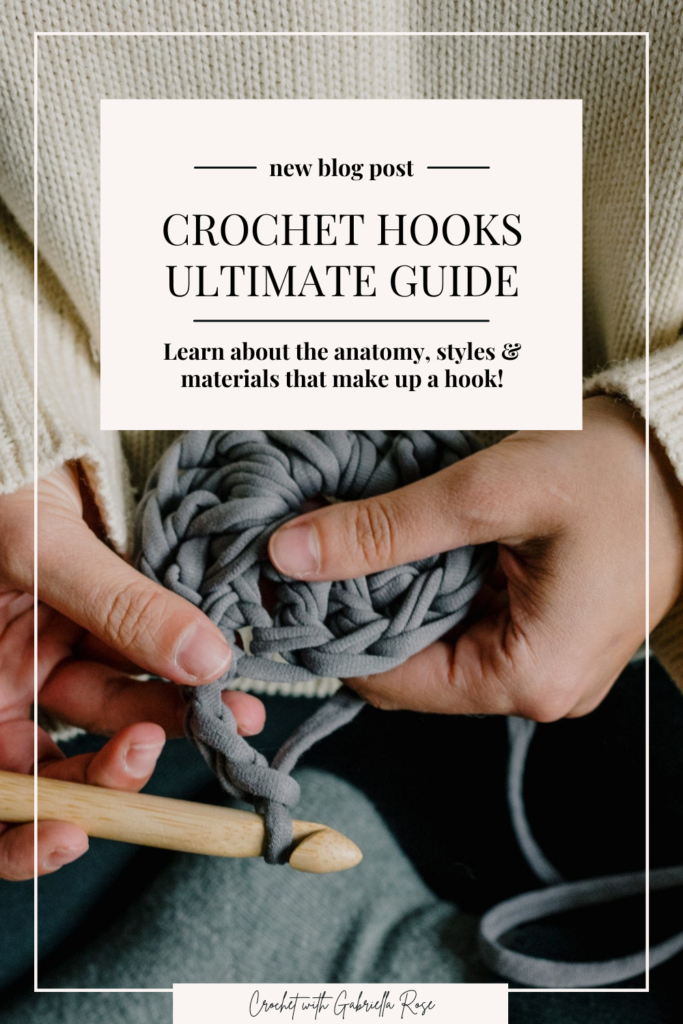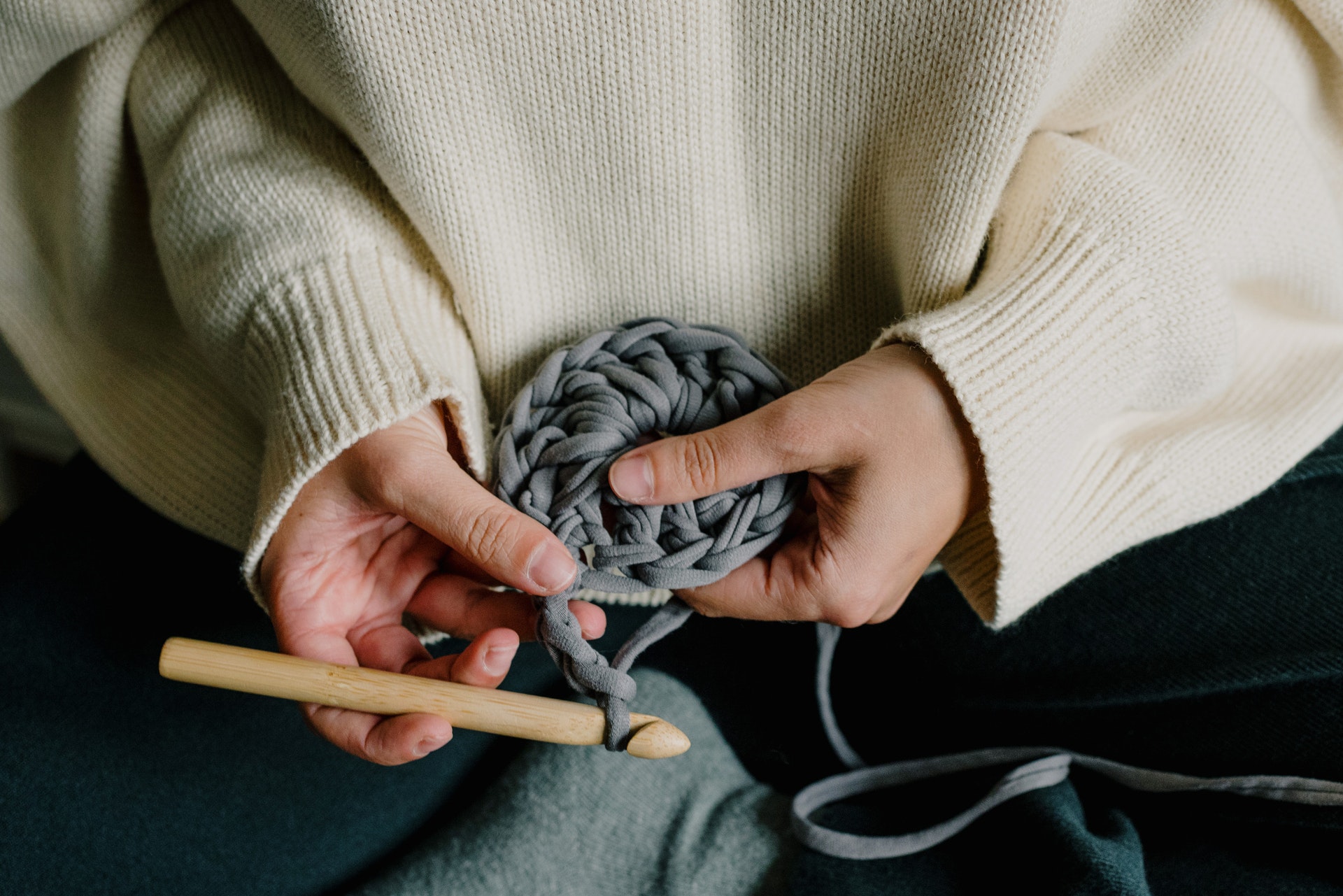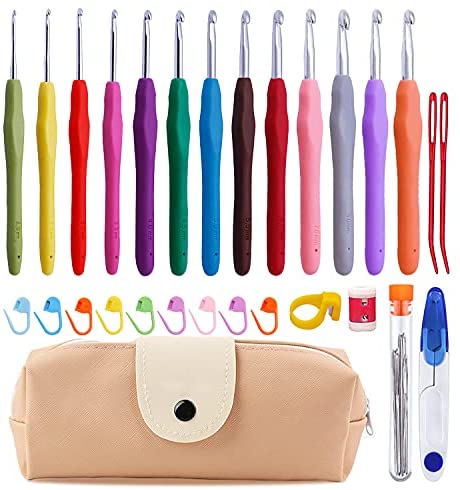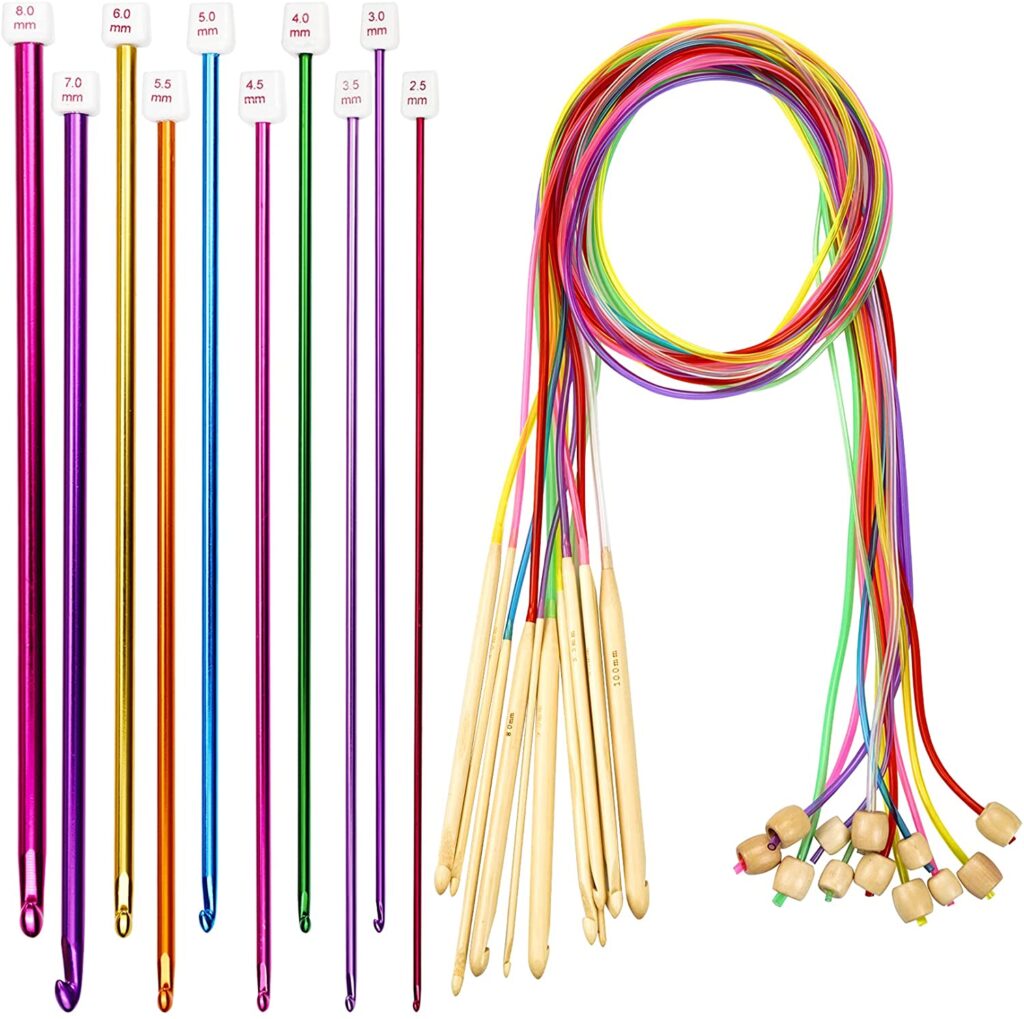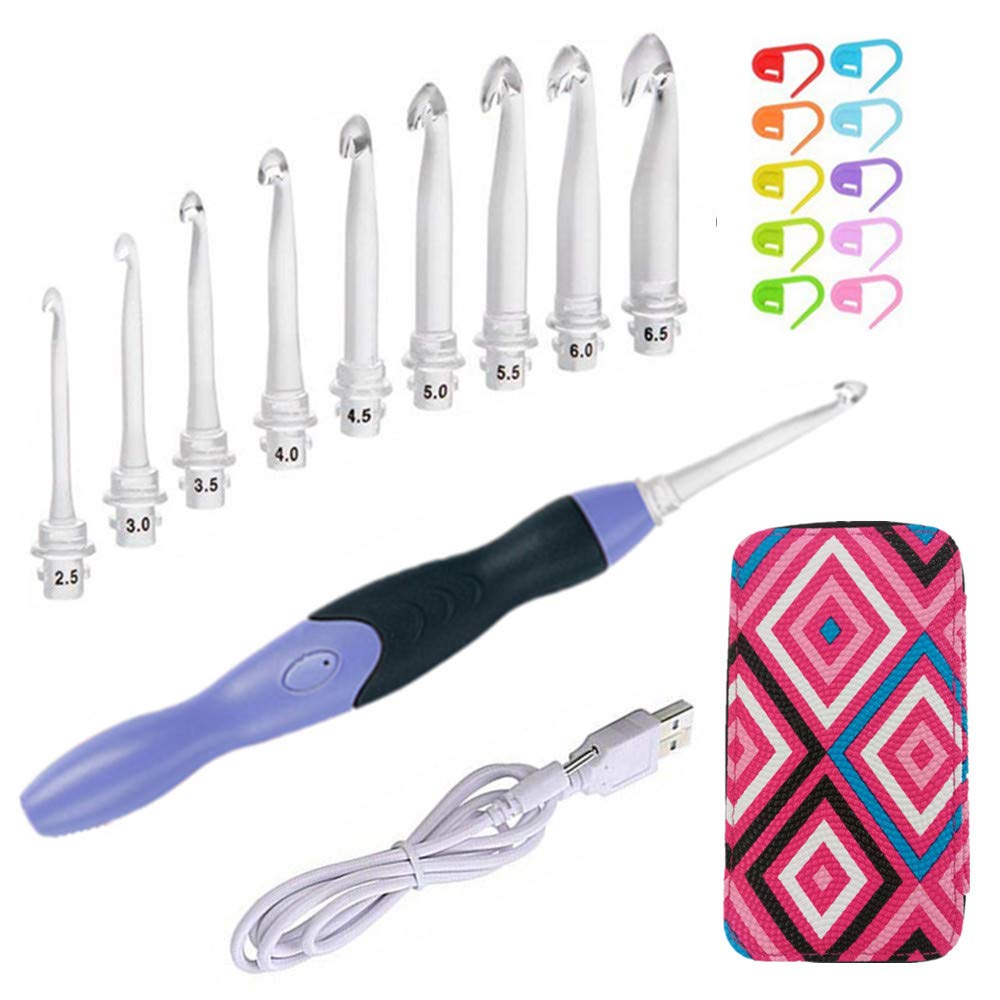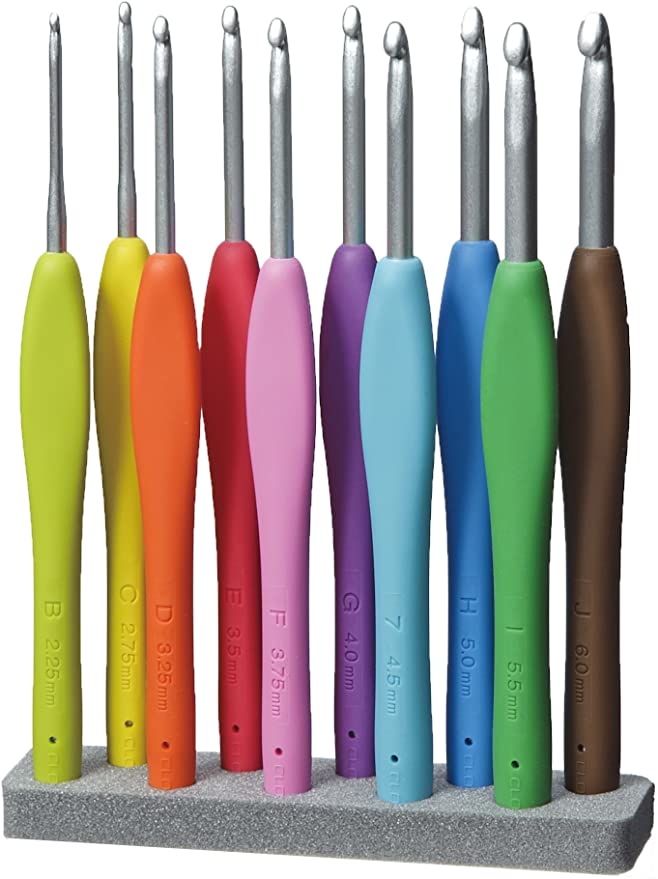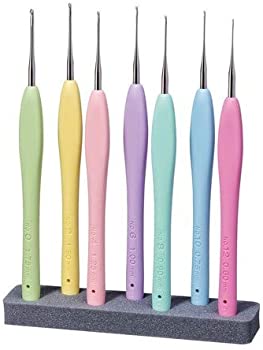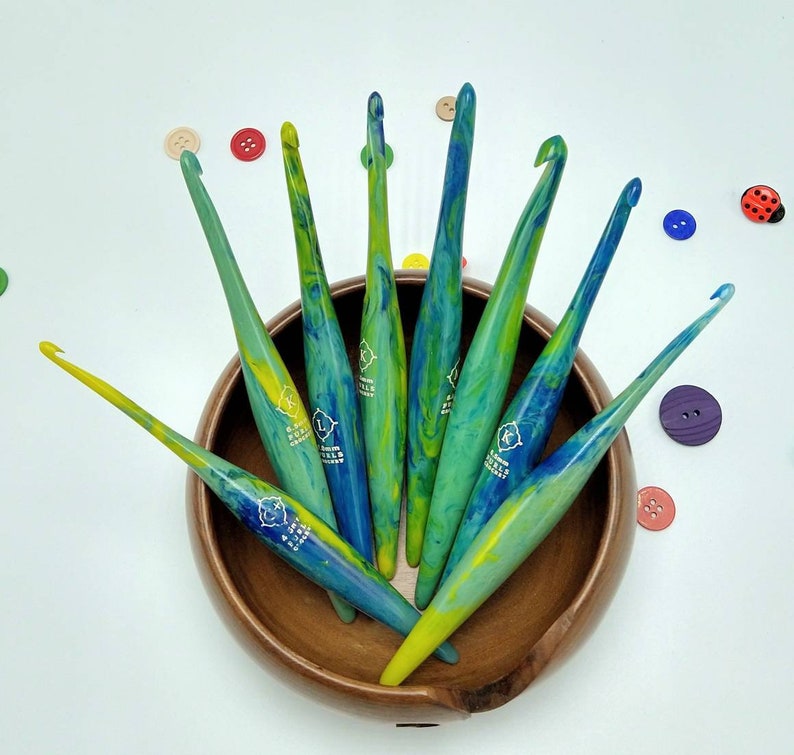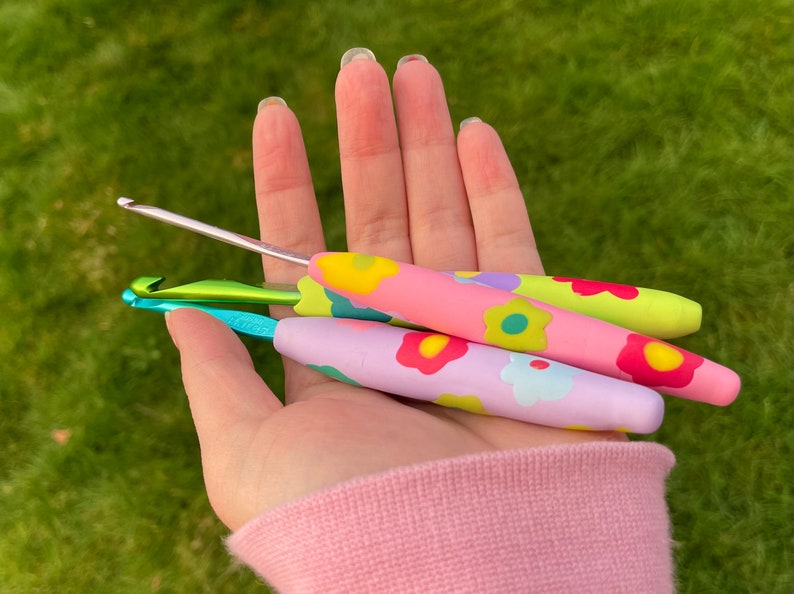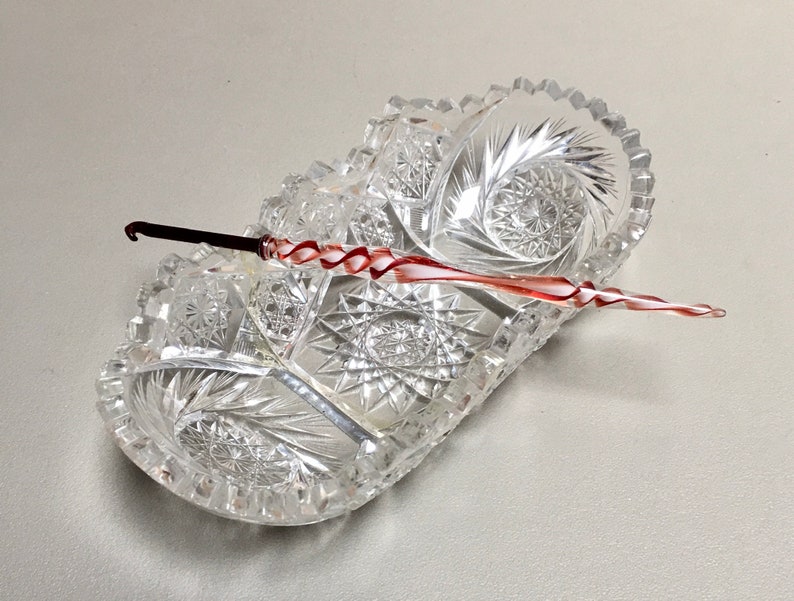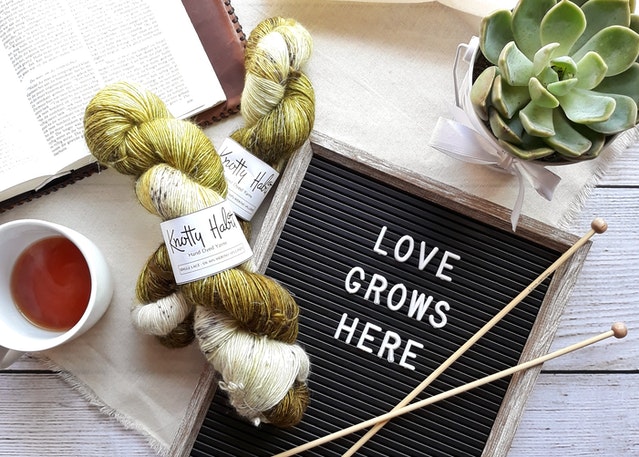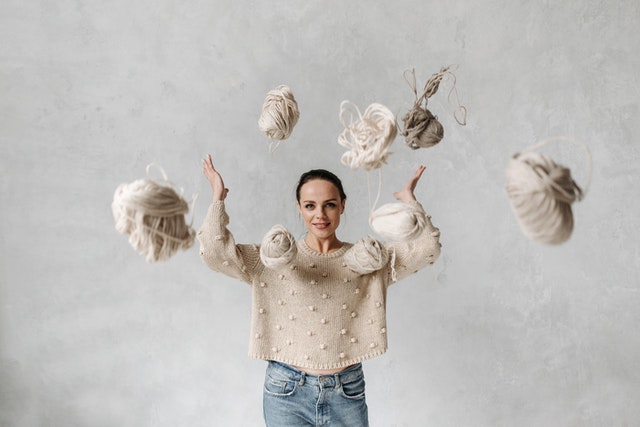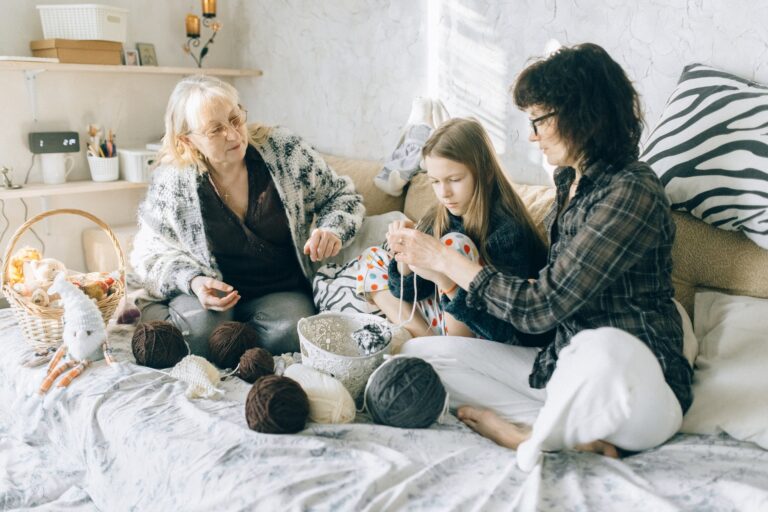Crochet Hooks: The Ultimate Guide
I can see it now… you’re walking into your local craft store, super excited to start crocheting. You know you need a hook, you get to the crochet isle and whoa… where do I begin? Do I want a plastic or metal hook? Which brand is better? Hold on, do those crochet hooks light up?
If you are confused, not to worry! I am here and happy to help you learn about all about the world of the crochet hook. Let’s dive in!
This post contains affiliate links, which means I receive a small commission, at no extra cost to you, if you make a purchase using that link. Please see my disclosure for more details.
Crochet Hook Anatomy
Each crochet hook is divided into five parts:
- Head
- Throat
- Shaft
- Grip
- Handle
Depending on the hook, the head may be more pointy or rounded and the throat thinner or thicker. The shaft is usually the same, except for a slight diameter difference due to the changing of sizes, and the grip is usually flat or rounded. The grip is where the size of the hook is usually located. Some hooks may have a grip around the grip or handle, others do not. The main parts to remember are the head and throat.
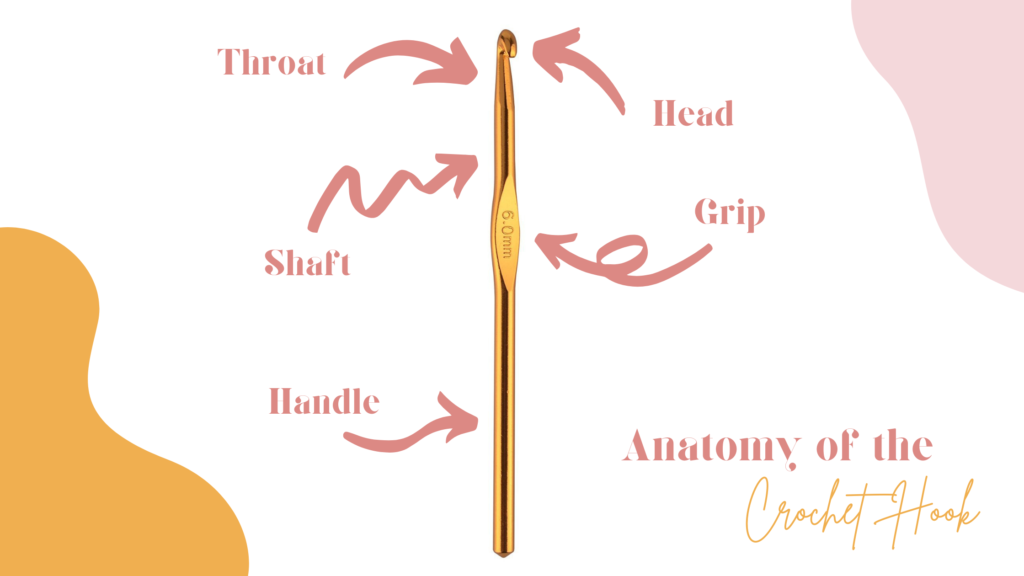
Types of Hooks
Basic
The basic crochet hook oftentimes is made of aluminum, but we go through materials in details later below. The biggest difference in the traditional “basic” hook you will see is the “tapered” versus the “incline” style.
The tapered style “tapers” down to a thinner throat, making the space between the hook and shafter deeper but a shallower gap between the hook and throat. It also is often characterized by its rounded point. The common hook brand for the tapered style is Boye.
The incline crochet hook style puts the hook point “in line” with the shaft, and has a much pointier tip than the tapered style. If the incline style seems more your speed, a great brand for these are the Susan Bates hooks.
Neither is better than the other, but if you are struggling to get the hang of crocheting with one style, try the other. It’s all about preference!
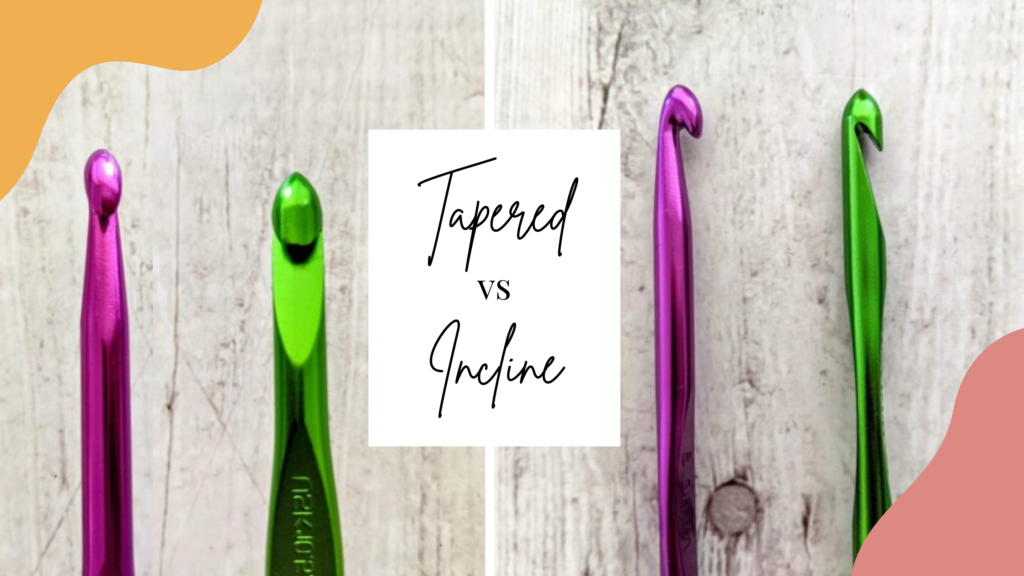
Ergonomic
Some people find the crocheting with regular hooks for long periods of time is uncomfortable, especially if they are dealing with hand conditions such as carpal tunnel or arthritis. If that is the case, an ergonomic crochet hook might just do the trick! These came come in all kinds of material from plastic to wood to even clay!
My personal favorite ergonomic choice is Clover Amour, but if you are trying to keep costs down, this set on Amazon is a great place to start! It even has some other great tools to help you on your way to happy crocheting!
Not sure if you want to try Clover Amour? I have a Clover Amour hook set review that talks about the pros and cons, and even some alternative hook options!
Tunsian
Tunsian, or sometimes called afghan crochet, is a type of crochet that looks similar to knitting and uses a different set of stitches than the ones seen in regular crochet, but it also uses a different hook design!
These hooks are longer than regular hooks, and while some may have a head on each end of the hook, these are called cro hooks, they may also just have a cable connecting a one-headed hook to another one-headed hook.
Knook
A knook is a long crochet hook with a hole running through one end. This is so you can thread a piece of yarn through the hole in the knook needle, and you can create stitches that look like knitting, but with a single crochet hook rather than with knitting needles.
Light Up Hook
Do you like to crochet at night, but don’t want to wake everyone else up by turning on all of the lights? Do you have friends like me that like to watch movies with all of the lights out and all you want to do is enjoy crocheting with some TV? Well, I’ve got the “bright” solution for you! Get it?
These hooks light the tip of your hook so you can see where to insert your hook into your project! How cool is that? It even has a nice case to go with it!
Hook Materials
There are many different materials that crochet hooks can be made out of, but which one is best for you? Keep reading to find out!
Aluminum
Aluminum is the most common material for crochet hooks, and usually the first set a crocheter will buy. They have a large range of sizes and allow for nice, smooth and speedy crocheting!
Steel
Steel is only used for the smaller crochet hooks, such as the ones used for thread crocheting. Having a ergonomic hook like these Clover Amour hooks are great because of how small the hook would normally be without these nice handle grips. But also, how can you resist these gorgeous pastels?
Plastic
Plastic crochet hooks are great for a variety of crochet hook sizes, and are the primary material for “jumbo” size hooks, due to being a nice and lightweight material.
Whether you enjoy the tapered style of Boye’s crochet hooks, the incline of the Susan Bates hooks, or marching to the beat of your own drum with these beautiful homemade ergonomic hooks, there’s a little something for everyone!
Bamboo and Other Wood
Light the plastic crochet hooks, wooden hooks are lightweight and warm in the hand. They are also available in very small and jumbo sizes.
These crochet bamboo hooks are so unique and I love the wood burning! However, if you are looking for something a little cheaper, these wooden crochet hooks are a great alternative.
Clay
Clay is another great ergonomic option with lots of different styles to match your amazing and unique personality! They are usually made using an aluminum or steel hook with a clay grip handle designed to go over it. This shop has the cutest clay crochet hooks ever, and I think her flower power crochet hook below is my favorite!
Glass
Lastly, one of the rarest but most unique crochet hook materials around is glass. Though these are less common and on the pricier end, they are no doubt beautiful and possible a great gift option for the lifetime lover of crochet. Looking for other gift options for crocheters? Check out there 30 gifts under $20 that are perfect for that amazing crocheter in your life, or even just a little “treat yourself” gift for you!
Conclusion
I hope you enjoyed learning a little bit more about the vast world of crochet hooks! What is your favorite crochet style and material? Comment below!
